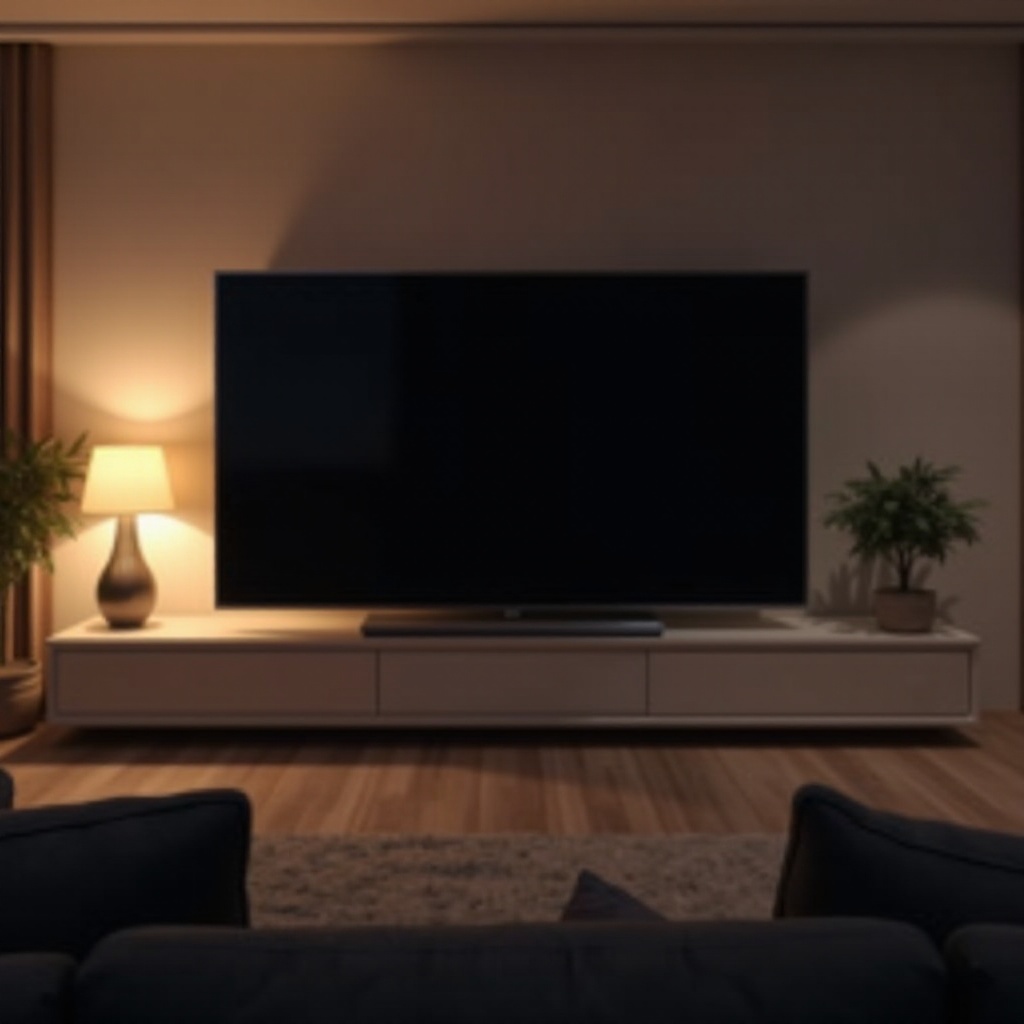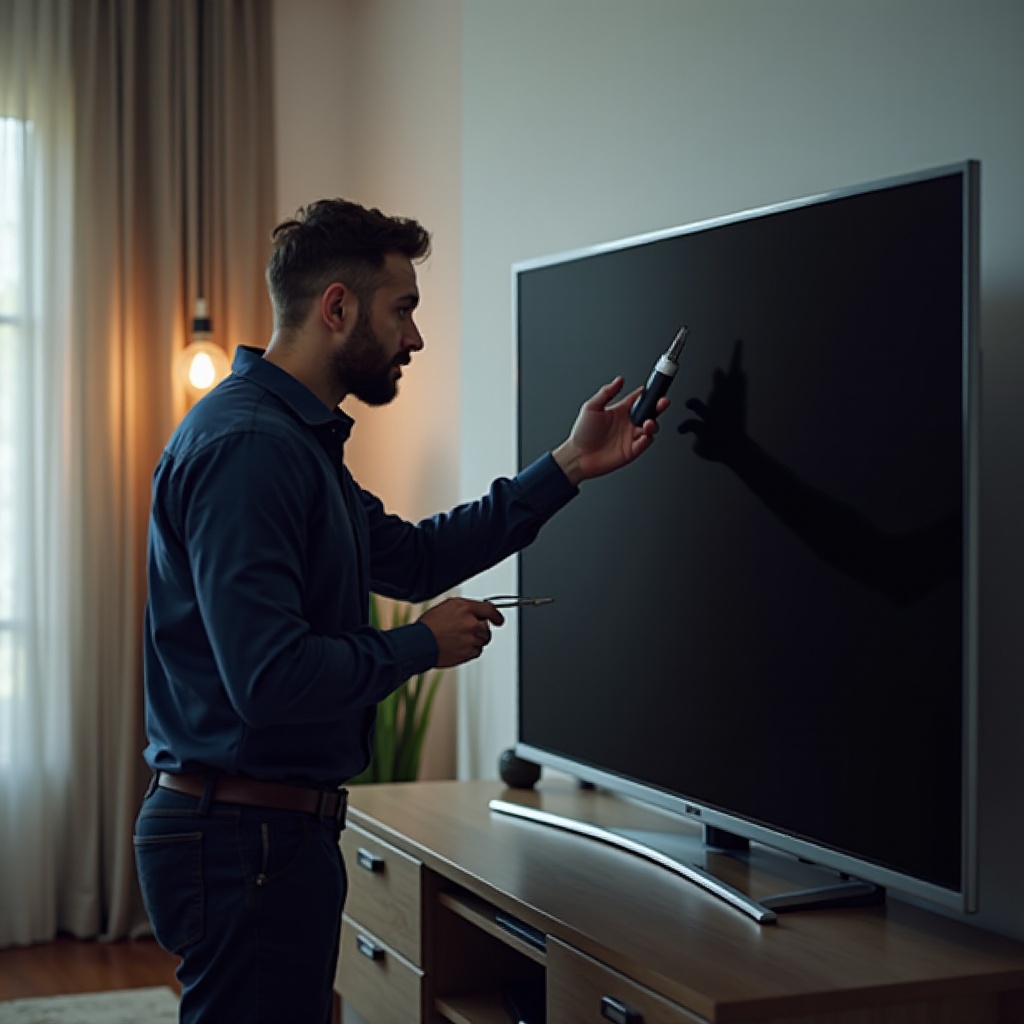Introduction
Experiencing a dark TV screen can be quite frustrating, disrupting the joy of watching your favorite shows or crucial sports matches. The solution to this common issue begins with understanding the possible reasons behind it. By identifying these causes, you can address the problem and implement measures to prevent its recurrence. This comprehensive guide delves into the numerous factors contributing to a dark TV screen, offers troubleshooting techniques, and provides maintenance tips to ensure your TV remains in optimal condition.

Common Causes of a Dark TV Screen
Recognizing the reasons behind a dark display is crucial before attempting any solutions. Let’s explore some common causes of this issue:
Display and Hardware Issues
One of the primary reasons for a dim TV screen can be related to hardware components. Over time, wear and tear may impact parts such as the backlight, which is vital for screen brightness. Especially in older models, problems with LCD and LED panels are not uncommon. Even with high-quality manufacturing, these components can fail, leading to dim displays.
Incorrect Brightness and Picture Settings
Often, the settings on your TV may be the culprit for a dark screen. Incorrect brightness levels, contrast ratios, and image modes can significantly impact visibility. TVs configured to energy-saving modes may sacrifice light intensity for reduced power consumption, resulting in a less vibrant screen display.
Environmental Factors and Room Conditions
The ambiance of the room also influences how you perceive screen brightness. Bright sunlight or other lighting sources can cause glare, making the screen appear darker than it is. Thus, examining room conditions is vital when diagnosing screen issues.
Troubleshooting Techniques to Brighten Your TV Screen
After identifying potential causes, the next step involves using effective troubleshooting methods to resolve the issue:
Adjusting Brightness and Other Picture Settings
- Access the TV menu using the remote control.
- Locate the picture settings section.
- Increase brightness and contrast levels as preferred.
- Test various picture modes such as Vivid, Cinema, or Dynamic to find what suits your environment best.
- Turn off any energy-saving or ambient light sensing options that may automatically lower brightness.
Resolving Power and Connection Problems
- Ensure consistent power supply by checking power cables and sources.
- Investigate all cable connections, focusing on HDMI inputs from external devices.
- Try a different power outlet if you suspect the current one is faulty.
- Utilize a power conditioner or surge protector to provide a reliable electric supply.
Utilizing Manufacturer’s Settings and Recommendations
- Reference the TV user’s manual for model-specific troubleshooting guidance.
- Verify if any firmware updates are available, as manufacturers regularly release updates that rectify common bugs, including screen issues.
- Consider resetting the TV to factory settings as a last-ditch effort, noting this will erase personalized configurations.
When to Consider Professional Repair
If adjustments and settings fail to enhance the screen brightness, evaluating professional repair services might be necessary.
Identifying Advanced Technical Problems
Advanced issues, such as malfunctioning backlight circuits or degrading LEDs, might require expert assistance. If the screen flickers, shows spots, or remains dark despite basic troubleshooting, professional inspection is advisable.
Warranty Options and Service Centers
- Review the warranty status of your TV. If eligible, reach out for manufacturer services or recommendations for repair or replacement.
- Connect with authorized service centers that specialize in your TV brand for expert repairs.
- Consider the cost of repair versus purchasing a new TV if yours is notably old.

Preventative Measures for Maintaining TV Brightness
Preventive steps can ensure prolonged clarity and brightness.
Routine Check-Ups and Maintenance Tips
- Regularly clean the TV screen to prevent dust from accumulating, which can obstruct clarity.
- Place your TV where it is free from excessive heat and is well-ventilated, aiding in optimal performance.
- Adjust settings frequently to adapt to fluctuating light conditions in the room.
Importance of Keeping Software Updated
Updates from manufacturers often include performance enhancements, including picture quality improvements. Set your TV to update automatically or manually check for updates regularly.

Conclusion
A dark TV screen, while discouraging, is an issue that can be addressed with the right knowledge and actions. Whether it involves tweaking picture settings or seeking professional repair, there are numerous strategies to restore your TV screen to its prime condition. Regular maintenance and keeping software up-to-date are key to preventing such problems from recurring in the future.
Frequently Asked Questions
What should I do if my TV screen randomly goes dark?
Check the power supply and restart the TV. If the problem persists, inspect cable connections and try adjusting the brightness settings.
Can a dark screen be caused by a problem with the TV’s power supply?
Yes, inconsistent power supplies can lead to a dark screen. Ensure your power outlet and cables are in good condition.
How can I prevent my TV screen from becoming too dark over time?
Maintain your TV regularly, keep it updated, and ensure it is not exposed to extreme temperatures or excessive dust.